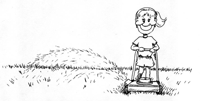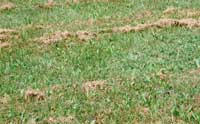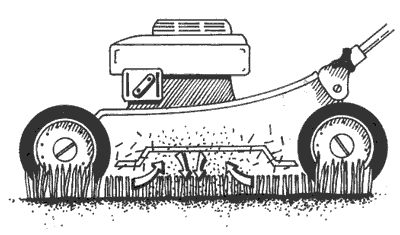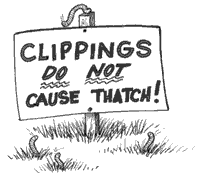About Grass Clippings
 |
Clippings are Fertilizer--Left on the lawn all season clippings contribute 30% of its total fertilizer needs for the year. Because they contain about 4% nitrogen, 1/2 to 1% of phosphorous, 2 to 3% potassium, and smaller amounts of other essential plant nutrients, they basically constitute a 4-2-3 fertilizer growing in your yard. Over a season of weekly cuttings, the decomposing clippings add nutrients to the soil the best way--slowly and steadily. And, it is free.
Clippings Reduce Water Need--When you allow the clippings to fall down among the grass blades, they shade the soil surface. This reduces moisture loss from evaporation. Moist soil is cooler soil.
Mowers and Clippings
 |
| ©Bob Lollo |
| Clumped Clippings |
 |
Collect clippings if you are planning to overseed the lawn and need to have the soil exposed. If, in the fall, you have more than 2 inches of leaves fallen on the surface of the lawn, use the bag to collect the mown leaves along with the cut grass. They make wonderful mulch or compost.
For more related information see Choosing a Lawn Mower.
Clippings are Not Thatch
 |
Grass clippings are not thatch. Nor do they promote the development of thatch. You may see them in the thatch when you look closely, but they are there just temporarily. Clippings contain over 75% water and are broken down by the worms, fungi, and other resident microbes in the soil on which they fall about 2 to 3 weeks. Since you mow more frequently than every three weeks, there is a constant process of decomposition of clippings going on down at the base of the grass plants. It is a very healthy process.
In conclusion, proper management of grass clippings is essential for a healthy lawn. By adopting practices outlined in this guide, you can effectively deal with clippings and enhance the vitality of your turf. Remember, mastering the art of dealing with clippings is key to maintaining a lush and vibrant lawn throughout the seasons.

